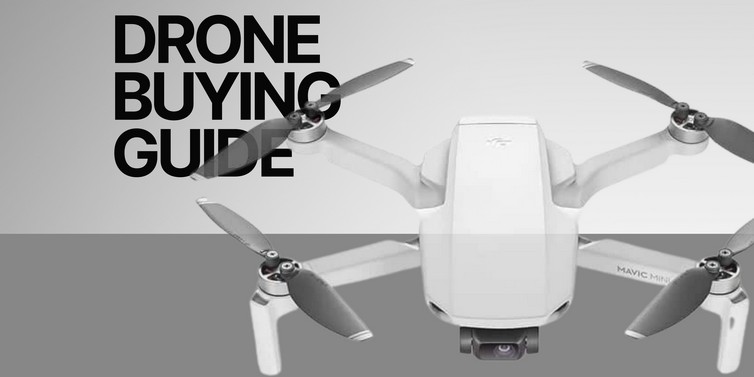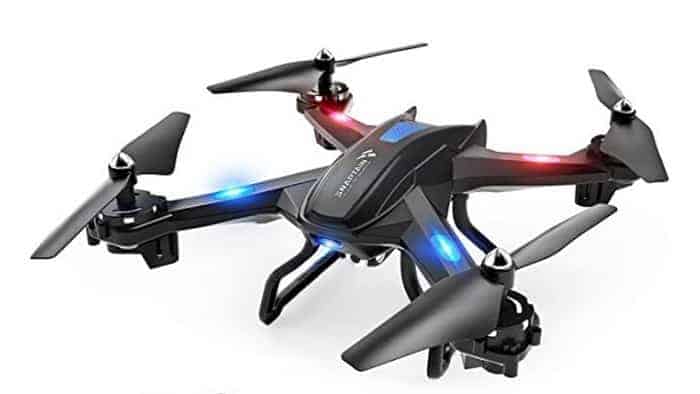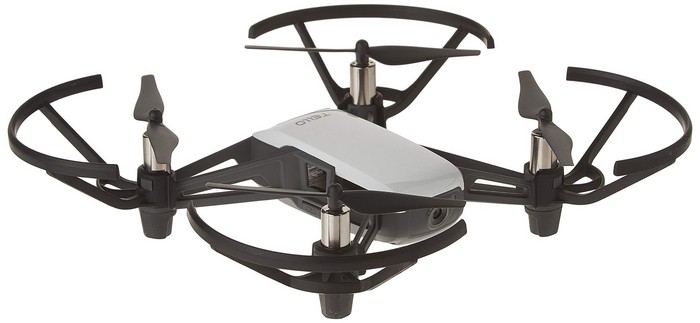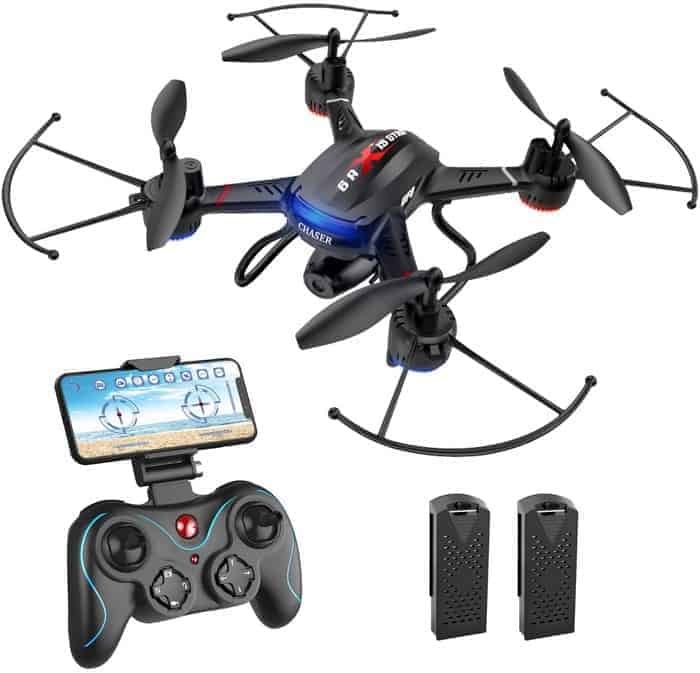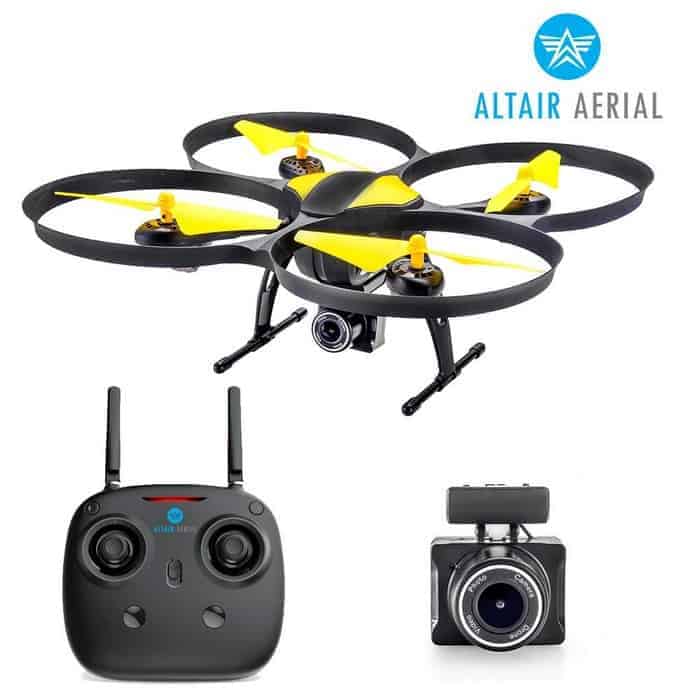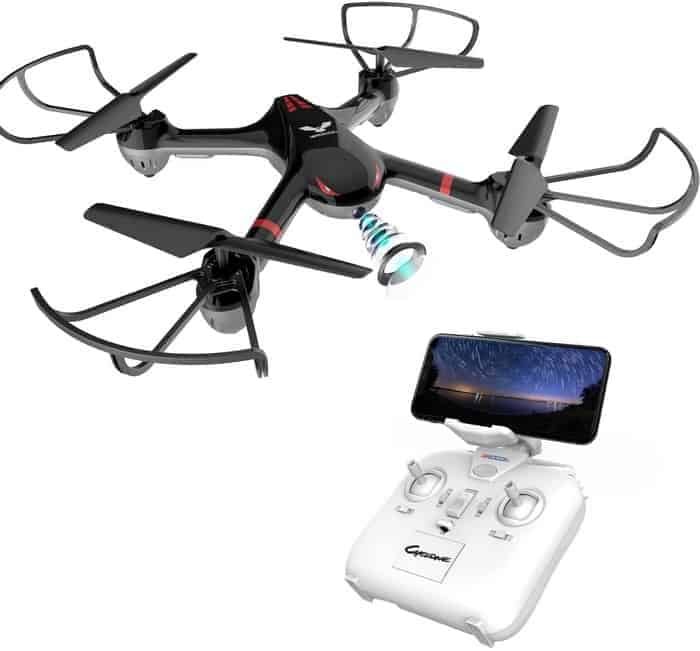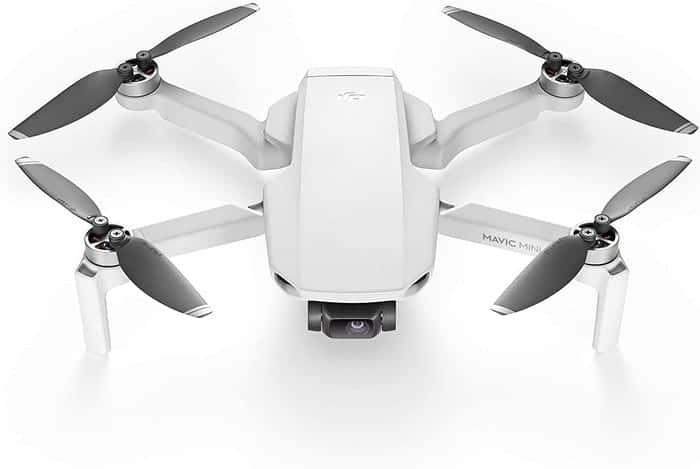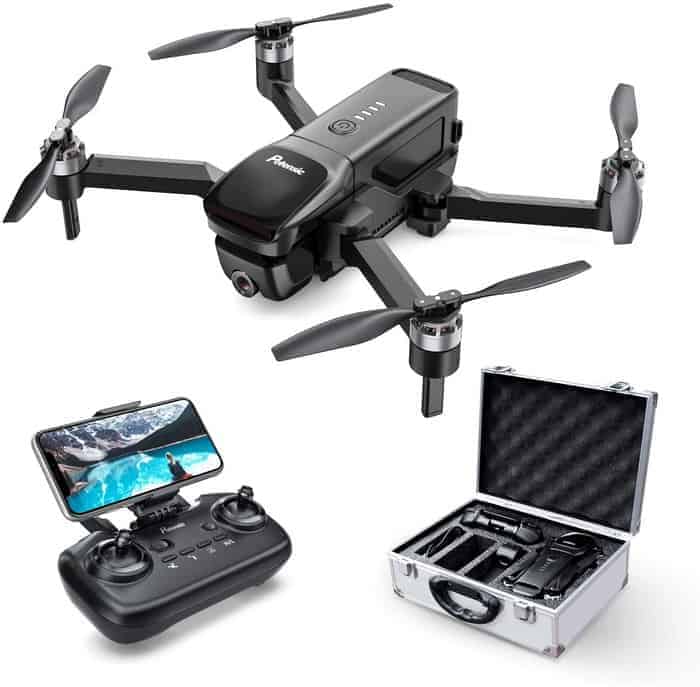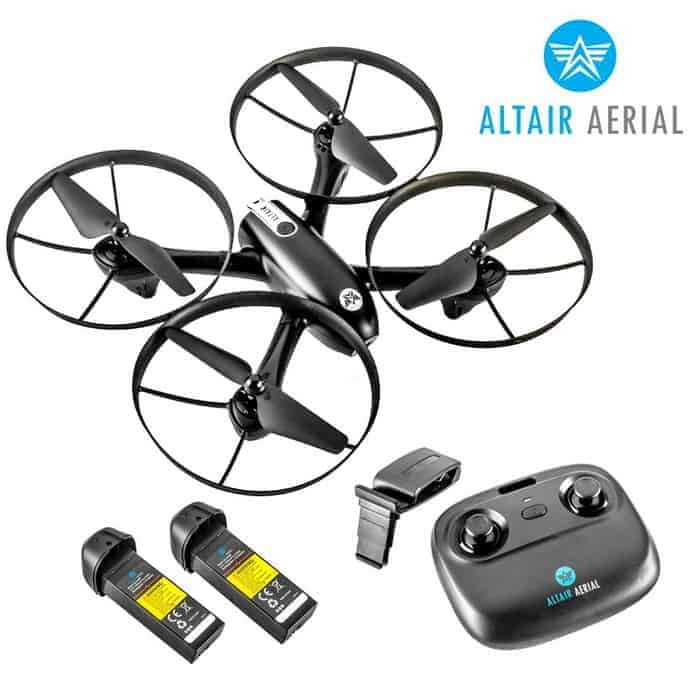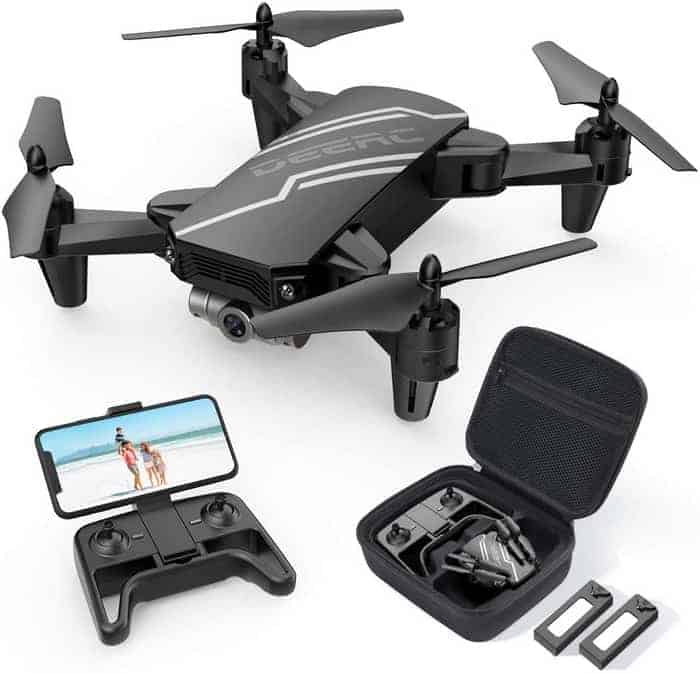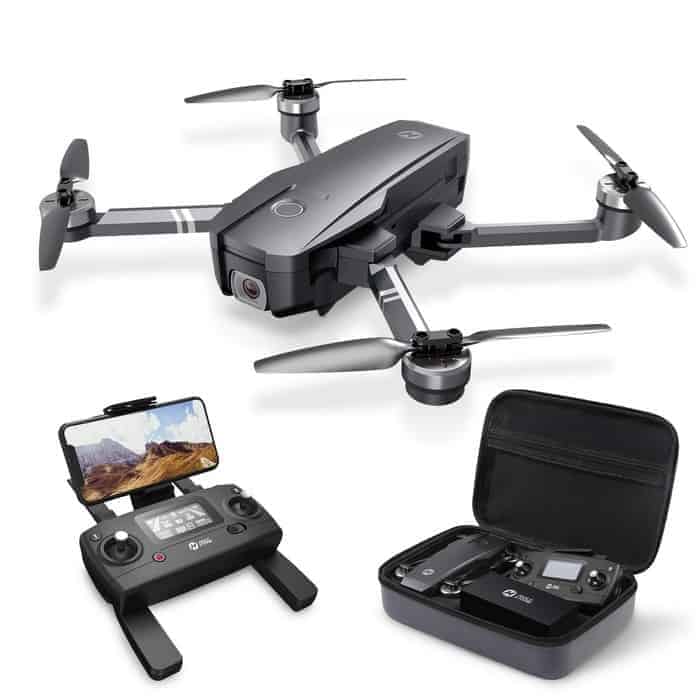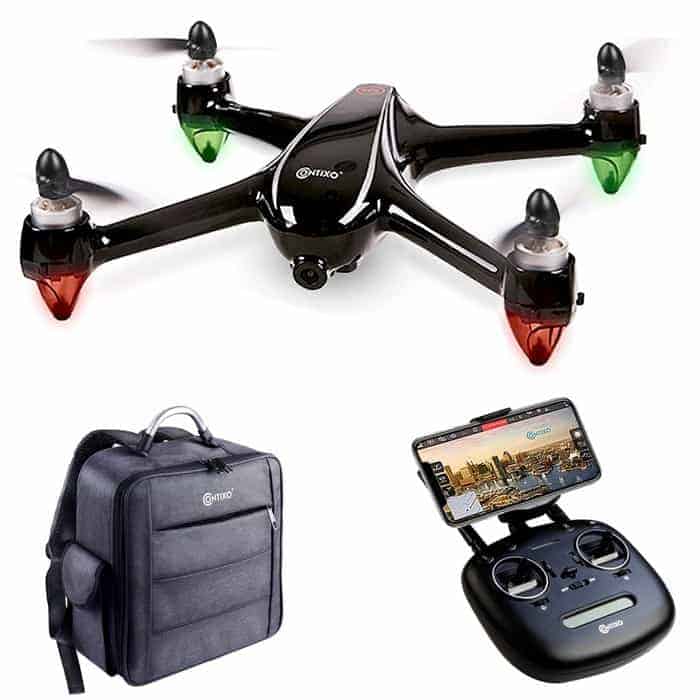So, did you just decide to invest in a drone? Regardless of whether you’re upgrading your drone or you’re buying your first drone, this drone buying guide for beginners will get you off to a flying start.
In this article, we’ll outline the various types of drones in the market, the key drone features to keep in mind, what drone should you buy and what to expect from drones at various price ranges. Along with our recommended list of best drones for beginners.
If you are interested, we also have our recommended lists of best drones under 300 and best drones under 500 for your easy reference. And a simple and quick guide to how do drones work.
Let’s start this drone buying guide by first looking at the different types of drones.
Types of drones
When it comes to selecting drones for beginners, you may first want to understand the various categories of drones.
Here are the main types of drones to choose from.
1. Mini drones
Also know as toy drones, you should opt for these palm-sized toy drones for small kids as they are designed with extreme flexibility but the only drawback is that they can cover short distances. You can fly them inside apartments for fun.

2. Professional drones
If there are drones that have reached the zenith of success with the help of technology, they’re the professional drones.
These drones are armed with a wide range of functionalities and are made of premium quality materials which help them stay in the air for a longer period of time and offer a multitude of features.
Professional drones are generally employed for specialized recces, industrial or agricultural purposes across various industries.
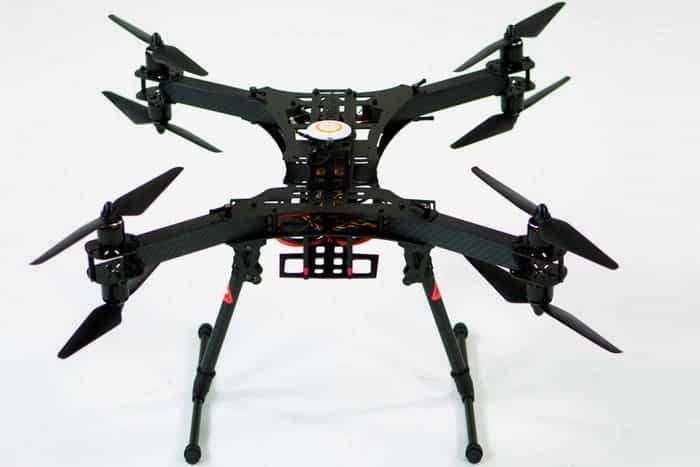
3. Hobby drones
Flying drones is gradually turning out to be a popular type of entertainment and hobby.
You can use these drones for recording high quality videos. They can shoot in a 4K resolution or higher thereby being favorites among professional videographers.
For drone enthusiasts who use it for hobby purposes are mid-sized devices with wide frames and big propellers.
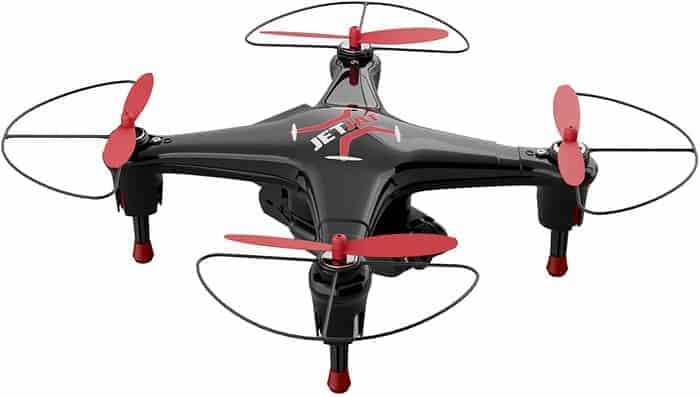
4. FPV Drones
FPV (First Person View) drones allow you to get a real time view – through a camera mounted on the drone that you are flying – either on a display or through a pair of goggles. FPV Drones are used mainly for racing, photography or even industrial surveys as the case may be.
However, unlike regular drones costs can stack up quickly when you go in for FPV drones.
With a regular drone you buy the drone and you usually get the propellers, battery, charger and may be the remote as a package and you are all set to go. But with an FPV drone you will need the following in addition to the drone itself:
- Extra Propellers, as back-up props in case of crashes
- Remote Controller
- FPV Goggles
- Batteries
- Chargers
- Tools, to repair
- A GoPro or Osmo Camera, for better quality photos and videos
However, with FPV drones the general flying experience is great as they allow you to fly freestyle or capture cinematic shots.
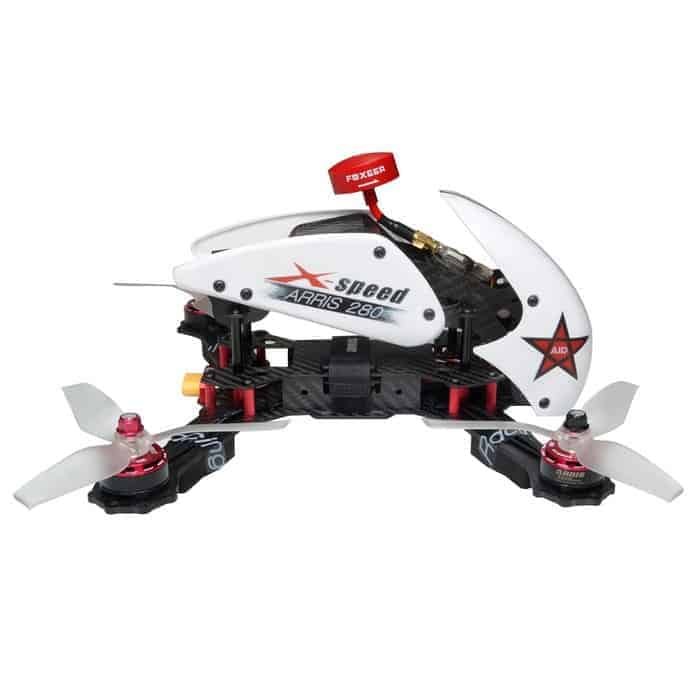
5. Racing drones
These are quadcopters with smaller dimensions with an aim of high-speed track transmission.
A first-person view (FPV) is required to control racing drones which consist of a video transmitter, a camera and a receiver that is capable of converting the signal to a video. So, you can be on top of what is happening and control it by checking the video from the camera.
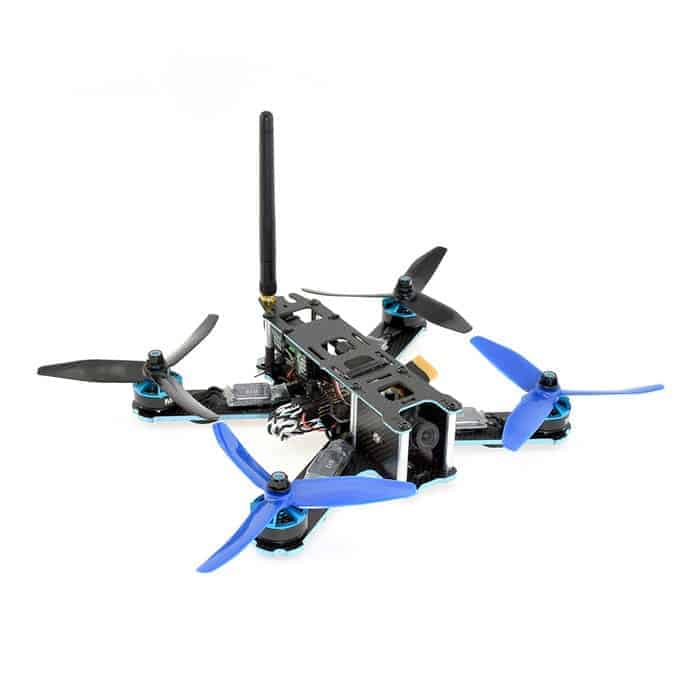
What Drone Should You Buy
To know which drone to buy really depends on two things: first, your budget and second, what you plan to do with the drone.
Drones are available across a wide price range from as low $50 for toy drones to thousands of dollars for high-end and specialized drones. Generally speaking, if you just want to have fun with your family in your backyard you can get yourself a decent drone, with all the bells and whistles, for a few hundred dollars.
And if you want shoot quality photos and videos for your sharing with your family and friends a good camera drone like Mavic Mini might serve you well. However, if you want professional video quality you may have to go for a drone with a bigger camera sensor like Mavic 2 Pro.
Here’s a ballpark comparison of the features you can expect from drones at different price ranges.
Cheaper Drones – What Can You Expect
Flight time: Between 7-10 minutes. Drones with premium cameras usually have shorter flight times.
Control Range: Around 50-100 meters.
Features: Follow Me, Live Video and the capability of performing tricks. Obstacle avoidance is yet another feature to watch out for.
Camera Quality: In-built HD 720p cameras which can produce decent quality image and videos.
Mid-Range Drones – What Can You Expect
Flight time: Around 12-18 minutes.
Control Range: Around 200-500 meters.
Features: Waypoint Flight, GPS, Orbit Mode, Follow Me mode, Auto Return, Headless Mode, Low Battery Alarm, LED lights, Altitude Hold, Obstacle avoidance.
Camera Quality: High-quality image and live video transmission. Some carry a Go Pro cam.
High-end Drones – What Can You Expect
Flight time: Around 20-30 minutes.
Control Range: From 2 km – 7 km
Features: Besides the features mentioned above, autonomous functions like orbit, GPS integrated flight, Point of Interest, optical flow sensors.
Camera Quality: 4K and HD cameras. Cameras can record crystal clear footage for film projects or vlogs.
Popular Drone Brands
Best Drones for Beginners
1. SNAPTAIN S5C WiFi FPV Drone with 720P HD
WEIGHT: 1.55 lbs | RANGE: 80m for video transmission | GPS: NA | FLIGHT TIME: 16 mts | CAMERA: 720p HD | RECOMMENDED AGE: 10+
Good for indoors (even if you end up crashing a lot). This is among the better hobby drones for beginners who want to later graduate to more expensive drones. Also, it comes backed by reliable customer service.
2. Ryze Tech Tello HD720 Video
WEIGHT: 2.8 oz | RANGE: xxxm | GPS: NA | FLIGHT TIME: 13 mts | CAMERA: 5mp 720p HD | RECOMMENDED AGE: 8+
A good first drone that comes from the DJI stable. The camera does well for still photography though videos, though decent, may not be upto scratch. Very easy to fly indoors, even outdoors when there’s less wind. Definitely good for a beginner.
3. Holy Stone HS110D FPV RC Drone with 1080P HD Camera
WEIGHT: 5.3 oz | RANGE: xxxm | GPS: NA | FLIGHT TIME: 13 mts | CAMERA: 1080 HD | RECOMMENDED AGE: 14+
Another good beginner drone from a good brand name. Offers smooth controls, even as both the picture and video quality is among the best in the price range.
4. Altair 818 Hornet Beginner Drone Live Video Drone
WEIGHT: 2.9 oz | RANGE: 150m, 60m for video | FLIGHT TIME: 15 mts | CAMERA: 720p HD | RECOMMENDED AGE: 14+
A rugged, lightweight drone that is easy to learn for someone starting out. Durable quality and intuitive controls come backed by Altair’s solid customer service. Well suited for beginners who like to shoot photos and videos.
5. DROCON X708W Wi-Fi FPV Training Quadcopter with HD Camera
WEIGHT: 1.6 lbs | RANGE: 80m, 30m video transmission | FLIGHT TIME: 7-9 mts | CAMERA: 480p HD | RECOMMENDED AGE: 14+
Simple to fly and using the app is easy for young beginners. Durable and fun but more suited towards young kids.
6. DJI Mavic Mini Drone Quadcopter UAV with 2.7K Camera Bundle
WEIGHT: 0.55 lbs | RANGE: 4000m | FLIGHT TIME: 30 mts | CAMERA: 3-Axis, 2.7K UHD | RECOMMENDED AGE: 13+
This is a more serious drone for older kids and adult beginners. The ease of flying and the video quality exceeds expectations. Decent battery life and it is quite portable as it folds up small.
7. Potensic Foldable Drone D68 with Camera for Adults 4K FHD GPS
WEIGHT: 5.24 lbs | RANGE: 1640ft | FLIGHT TIME: 25 mts | CAMERA: 4K FHD | RECOMMENDED AGE: 16+
A solid starter drone with all the usual bells and whistles such as Follow Me, Orbit Mode, Selfie Drone and Auto return home. It stands out for its ease of control and stability. And can take high quality photos with its 4K adjustable camera. Another foldable drone and it comes with a carrying case. A solid choice for adult beginners!
8. Altair Falcon AHP Drone with Camera for Beginners
WEIGHT: 2.97 lbs | RANGE: 125m | FLIGHT TIME: 8-10 mts | CAMERA: 720p HD | RECOMMENDED AGE: 14+
A great starter toy drone for youngsters. Offers good overall quality and is quite durable. Includes a decent return to home function that compensates for the 720p camera. A fine product worth the money.
9. DEERC D20 Mini Drone for Kids with 720P HD FPV Camera
WEIGHT: 17.5 oz | RANGE: 40m | FLIGHT TIME: 24 mts | CAMERA: 720p HD | RECOMMENDED AGE: 14+
This drone fits into the palm of your hand and is quite fun to fly. Easy to operate and can bump into stuff and still fly. Can be used outdoors in less windy conditions. Offers good value for it’s price, recommended for all beginners.
10. DEERC Drone with Camera for Adults 1080p Full HD FPV
WEIGHT: 2.7 lbs | RANGE: 640 ft | FLIGHT TIME: 12 mts | CAMERA: 1080 FHD | RECOMMENDED AGE: 14+
Good quality build, decent flight time and controls and plenty of features define this drone model.This is another durable beginner drone that can handle bumps well. Ranks high on ease of use.
11. Holy Stone HS120D GPS Drone with Camera for Adults 2K UHD Auto Return Home
WEIGHT: 221 gm | RANGE: 300m | FLIGHT TIME: 18 mts | CAMERA: 2K UHD | RECOMMENDED AGE: 14+
An excellent entry level drone that flies well outdoors. Includes Auto Return Home among other useful features, a good package with good value. A ideal choice of a beginner drone for adults, from a trusted manufacturer.
12. Contixo F18 2K FPV RC Drone with Camera for Adults Brushless Motor
WEIGHT: 0.73 lbs | RANGE: 2000ft | FLIGHT TIME: 20 mts | CAMERA: 2K UHD | RECOMMENDED AGE: 14+
This drone is a complete package for any drone beginner. Easy to fly, handles the wind well and good for photography and video capture. It comes with GPS and all other necessary features. A reliable choice for older kids and adults.
Essential features to look for in a drone
The price of the drone won’t be a proper indicator of the quality of the machine though it will give you an approximate evaluation of which drones are better than others.
To make an informed decision, you have to be aware of the specs. Here are few features to watch out for.
Battery life
Just as a smartphone runs out of battery, a drone will also run out of juice. If you choose the best models, the maximum flight time in between charges hardly exceed 30 minutes.
While you can always carry extra batteries, don’t forget to factor in the cost of spare batteries when calculating the total cost.
Range of flight
The range of flight usually ranges from 30 metres/100 feet to one kilometer or even more.
The quadcopters that are meant for beginners usually come with a short range and it perfectly suits the novices who just wish to use it inside an apartment or an enclosed place.
Flight Time
Majority of the models come with a flight time that ranges between 10-15 minutes – though there are a few expensive versions that can fly for 25 minutes or more – after which you require either replacing your batteries or recharging them.
So battery life is one feature that you may want to keep a close eye on as you may have to charge the battery for over an hour or thereabouts.
The costlier models may offer over 15 minutes of flight time. In case you have a requirement of longer flying time, for say aerial photography, you may want to go in for a more expensive camera drone and/or buy a additional battery.
Speed
In the features of a quadcopter, it is most unlikely that you’ll get maximum speed of flight but in case you can settle with light-weight models that don’t have too many accessories.
They can accelerate more smoothly than the heavier ones.
Hence, you have to choose between speed and added equipments.
Number of blades
The most user-friendly and the most popular ones are those models which come with 4 blades but you can even get models with 2, 3, 6 and also 8 blades.
Decide the power that you would need so that you can choose the number of blades.
Meanwhile, you can’t forget that the more powerful your drone is, the sooner its battery will get discharged.
Gyroscope
All drones don’t come with gyroscopes that are sensors that let the drone fly effortlessly.
In a stormy weather, a drone with a gyroscope will stay put while one without a gyroscope may fall and crash.
Average size
Are you buying a drone for your children? If yes, get them a mini drone or one of the toy drones.
For beginners or amateur shooters, medium sized devices will be perfect. In case of professional purpose, get a larger drone.
Camera
All drones don’t come with a camera. In case you want to purchase a drone as a flying machine, you won’t need a camera.
But if you intend to shoot photos or videos, a drone with camera is a must. However, depending on your requirement, do check the camera quality before you buy one of the camera drones.
Brushless motors
While you go through the list, you will definitely come across the term brushless motors.
Though the brushless motors are slightly more expensive than the brushed ones yet they offer a longer lifespan which means the owner doesn’t require replacing the motors too often.
Headless mode
For beginners, it might be tricky to fly a drone initially. Therefore there are few models that offer the headless mode.
In this mode, as you press the controller stick in a definite direction, the drone will fly in that direction and not to the direction where the joystick points.
Integrated GPS
When you choose from the premium drones, you’ll come across models with integrated that allows the machines to stay informed about the geographical location of the drone.
Thanks to this upgrade, your drone will find its way to home and hence this feature is named RTH (return-to-home).
Follow-me mode
There are few GPS enabled drones that offer the follow-me-mode that allows the owner to track the device across the ocean or ground.
So, if you’re off to a trek or mountain biking, you can let your drone fly above you and record some of the best videos of your adventure.
Gimbal
Have you seen a drone with integrated gimbal?
Thanks to this feature that your drone can remain steady while it is flying through high altitudes and high winds.
Drones that are flown indoors don’t really need this feature but if you’re buying a drone for outdoor, ensure having a gimbal feature.
Obstacle avoidance
One more necessary feature of the premium drones is obstacle avoidance.
Although this feature can add to the cost of the device but it’s worth the cost as it can prevent the device from crashing into a tree.
Don’t forget to go through the reviews to check whether or not this feature works as advertised.
Spare part availability
Drones can break and hence you have to check whether or not the spare parts are available before choosing a drone.
What to know before buying a drone
For someone who’s new into the market, buying a drone can be a daunting task.
Once you visit the online e-commerce sites, you’ll be bombarded with jargons and technical terms that you won’t know of.
Here are the few things that you should be familiar with before purchasing a drone.
Understanding the acronyms
There are several acronyms that you’ll come across while buying a drone and you have to know what they mean.
RTF is the full form of ready-to-fly and in these cases, you will have to tie the controller, install the propeller to make the drone ready to fly.
BNF means bind-to-fly drones which are totally assembled and they come without controllers.
ARF means almost-ready-to-fly and this is when you buy a drone kit. They have receivers and transmitters. Many even come without flight controllers, motors, batteries and electronic speed controls.
FPV means First-Person Video and these drones can stream footage from the perspective of a person.
You may need a registration for owning a drone
Did you know that the FAA or the Federal Aviation Administration deems drones as UAS or Unmanned Aircraft Systems and demands all UAVs weighing above 0.55 pounds to be registered?
The cost attached to registration is $5 per aircraft and this remains valid for 3 long years.
The Unique Identification Number that you receive post registration has to be attached to your drone. The minimum age for owning a drone is 13 years.
Controlling a drone is impossible without a perfect hand-held device
There are several drones that are controlled with the help of smartphone devices instead of controllers.
Unless you own an outdated mobile, this is certainly a better option.
The software of drone will usually work with new smartphones with the latest OS.
Hence you need to check the specifications of the drone before buying it. You may choose to upgrade your phone in case it is necessary.
The manufacturers usually claim that their drones can be flown easily but their claims are sometimes too good to be true.
Whether or not the flight of the drone will be smooth will depend on the internal mechanism and the flight controller.
Those that are designed for precise flying will demand manual controls and these aren’t good for beginners.
The ones that promise maximum stability are better for beginners as they can stay put in the air without too many controls from your end.
Certain flying conditions can have an adverse impact on your drone
Don’t get too cocky while flying your drone as there are certain poor weather or flight conditions which can cause harm to your drone or even make you lose it.
Clear sunny sky with no breeze is usually considered a perfect condition for flying drones. A gush of wind can make you lose control.
Pay attention to the guidelines for flying
In the year 1981, the FAA rolled out few guidelines for running such a drone aircraft.
As the advice was given ages ago, these rules can still be enforced.
Ensure that you can have a view of your drone all time and stay clear of the position of the drone and don’t fly above unprotected people or vehicles.
Get in touch with the control tower before you fly the drone within 5 miles of a heliport or an airport.
Don’t fly in tough weather conditions and don’t fly it when you’re under the influence of drugs or alcohol.
Know about the etiquette of flying drones
If you choose to fly your drone in urban or other residential areas, this needs to be done with extreme caution.
There are several laypersons who are overly concerned about the privacy implications of drones and hence they might end up creating a fuss about it.
So, when you operate your drone, stick to open fields, avoid places where there are houses, schools, churches, stadiums, prisons, power stations or busy roads.
Fields and public parks are undoubtedly the best option for flying your UAV.
Drone Beginners Guide – Rule #1 Stay out of trouble
Though you may have gathered enough knowledge on flying drones, yet if you happen to be a beginner, you have to be extra watchful. Check out some tips:
- Go through the manual and give a good read to the safety guidelines which you find in the official page of the drone. Make sure you even watch few tutorial videos before you take the plunge into flying.
- Operate along with the flight stimulator so that you can learn the basic flying controls and the intelligent flight modes. Be familiar with the controller inputs.
- Avert any kind of impediments by taking into account the flight speed and the other light conditions that can impact the performance of the drone’s system.
- Try not to hurt animals as the ultrasound that is released by the drones can lead to discomfort among animals. For avoiding bird strikes, fly your drone away from birds.
- Stay away from people as drones can be distracting. Don’t fly the drone near crows as this can heighten the chances of accidents. Look for an open area to operate the drone smoothly.
- Go for a pre-light check where you calibrate the compass for ensuring safety. Don’t forget to charge the battery and check whether the propellers are working properly.
- Fly the drone when there are minimum 10 satellites and when the GPS icon has more than 4 bars. You need a strong GPS signal as this is important for a safe flight.
So as we see that drones are literally everywhere, in the skies performing aerial aerobatics or stalking you from a pre-set distance, you too have to follow the herd.
However, take into account the above mentioned tips and advice in order to settle with the best drone in the market.
We trust you found this guide helpful enough to guide your purchase. We’ll be happy to hear any feedback from you in the comments section below. Happy flying!
